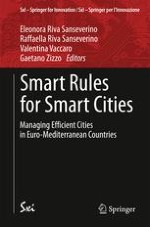2014 | OriginalPaper | Buchkapitel
8. Smart Planning and Intelligent Cities: A New Cambrian Explosion
verfasst von : Maurizio Carta
Erschienen in: Smart Rules for Smart Cities
Aktivieren Sie unsere intelligente Suche, um passende Fachinhalte oder Patente zu finden.
Wählen Sie Textabschnitte aus um mit Künstlicher Intelligenz passenden Patente zu finden. powered by
Markieren Sie Textabschnitte, um KI-gestützt weitere passende Inhalte zu finden. powered by
